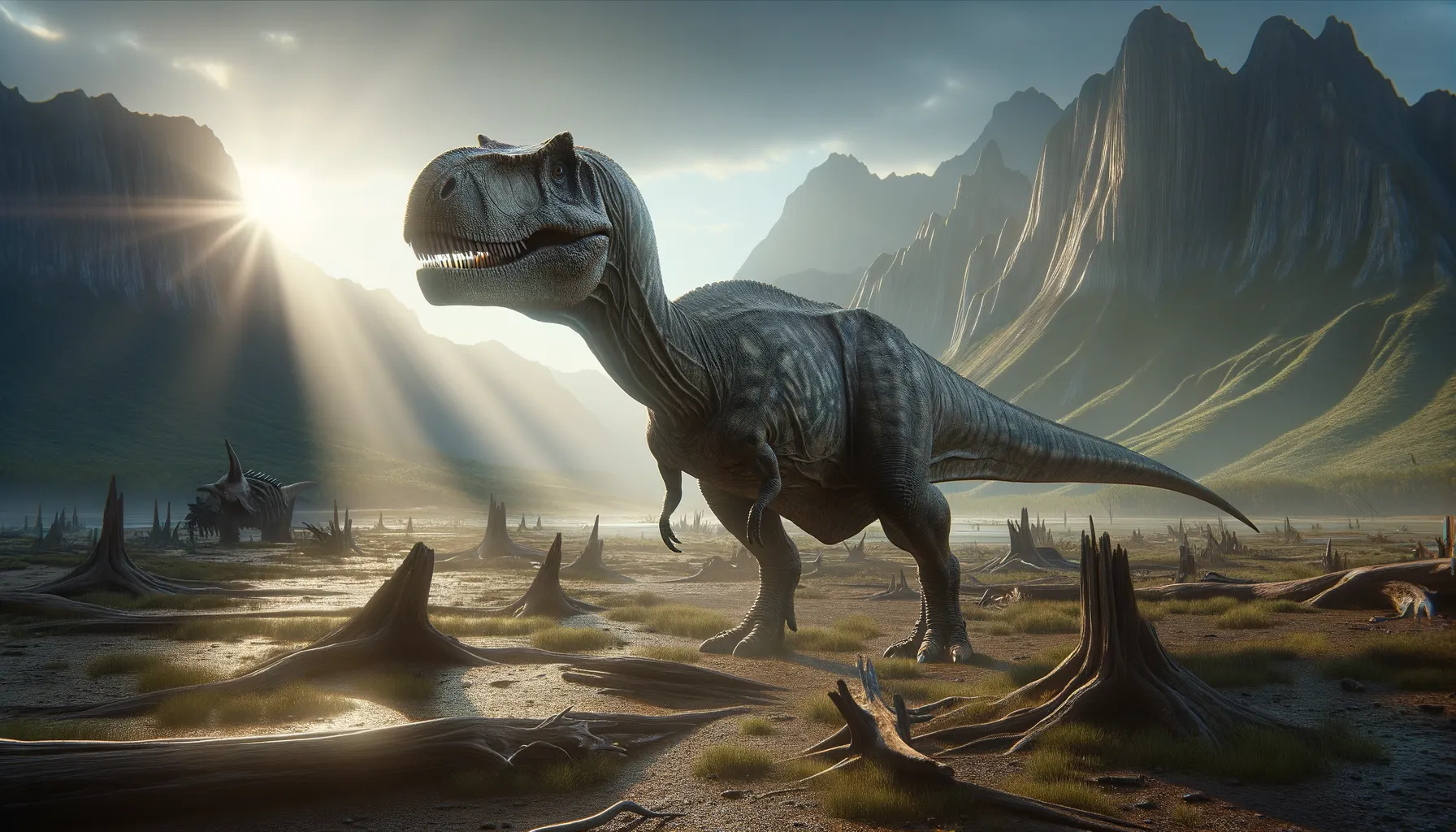
Hadrosaurus
The duck-billed grazer of ancient lands.
Period
Cretaceous
Length
Approximately 30 feet long.
Height
About 10 feet tall at the hips.
Weight
Approximately 3 tons as an adult.
Hadrosaurus was a duck-billed dinosaur known for its distinctive skull shape and moderately large size. Thriving in the late Cretaceous period, it was one of the most studied dinosaurs in North America. Its fossil findings have provided significant insights into the behavior and lifestyle of herbivorous dinosaurs. Hadrosaurus likely displayed social behaviors, roaming in herds for protection and grazing on diverse plant life across its habitat.
Diet
Hadrosaurus was an herbivore that primarily fed on plants. Its diet likely consisted of leaves, twigs, and shrubs, taking advantage of its flexible jaws and numerous teeth to process vegetation efficiently.
Hunting
Being an herbivore, Hadrosaurus did not hunt. Instead, it spent much of its time foraging for food in groups, using its beak-like mouth to pull vegetation.
Environmental challenges
Hadrosaurus faced numerous environmental challenges, from the changing climate of the late Cretaceous to the competition for food with other herbivores. Predators also posed a constant threat, necessitating the formation of herds as a defense mechanism. Seasonal changes could affect the abundance of available food sources, pushing Hadrosaurus to migrate to more favorable areas.
Speed
Moderate, suitable for short bursts.
Lifespan
Estimated at around 15 to 25 years.
First discovery
Discovered in 1858 in New Jersey, USA.
Fun Facts
- Hadrosaurus was the first dinosaur skeleton ever mounted for public display in the United States.
- This dinosaur lived during the Late Cretaceous period, around 70 million years ago.
- Hadrosaurus is known as a 'duck-billed dinosaur' because of its flat, broad mouth that resembles a duck's bill.
- It was a herbivore, meaning it only ate plants, and it likely fed on leaves, pine needles, and twigs.
- Hadrosaurus could walk on both two legs and four, making it a versatile mover.
- Its fossils were first discovered in New Jersey in 1858.
- Hadrosaurus means 'bulky lizard' due to its large size and body structure.
Growth and Development
Hadrosaurus grew rapidly, reaching significant sizes in a relatively short amount of time. Juvenile dinosaurs stayed close to adults for protection and learning. As they matured, growth patterns may have shifted to slower, steady increases as they reached adult size.
Habitat
Hadrosaurus inhabited forested floodplains, marshes, and near-river environments, places rich in different plant species. These areas provided ample food and water resources. Their habitat was littered with low-lying plants, which made grazing easier for these large herbivores.
Interaction with other species
Hadrosaurus likely interacted with various dinosaur species, sharing its habitat with other herbivores and some predators. Competition with other herbivorous dinosaurs could have been common, leading to changes in grazing patterns to avoid confrontation. Predators, such as tyrannosaurs, hunted Hadrosaurus, making vigilance within herds vital for survival.
Natural lifespan
In their natural environment, Hadrosaurus lived for approximately 15 to 25 years.
Reproduction
Hadrosaurus reproduced by laying eggs in nests that were likely communal for protection. Clutches of eggs would hatch after several months, with some studies suggesting parental care was given to the young. This care could have included guarding nests and guiding hatchlings to food sources.
Social behaviour
Hadrosaurus was a social dinosaur, often forming large herds that provided safety and facilitated communication. This behavior was crucial for protecting against predators. Social interactions involved vocalizations and physical gestures to coordinate movement and deter threats.
Fossil locations
The first Hadrosaurus fossils were found in Haddonfield, New Jersey. Subsequent discoveries have been made across North America, highlighting its widespread existence. Fossils include bones and teeth, providing a glimpse into its structure and lifestyle.
